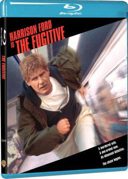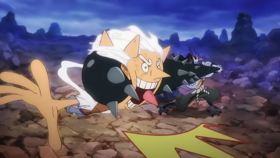It’s easy to forget in hindsight, but the 1990s were beset by a glut of feature films based on 1960s TV shows. Spurred by the out-of-the-blue success of The Addams Family in 1991, studios bombarded audiences with everything from The Beverly Hillbillies in 1993 to Wild Wild West in 1999. Some were spectacular bombs and some did alright, but the overwhelming majority were forgettable flash-in-the-pans, with two notable exceptions: 1996’s Mission: Impossible spawned a feature franchise continuing unabated in the 27 years since its release. And then there was The Fugitive.
With the Harrison Ford classic celebrating its 30th anniversary this week, it’s time to look back at what made the film work so well, where it originated, and the effect it had on Hollywood.
Where It Began: The Fugitive TV Series
"The name: Dr. Richard Kimble. The destination: Death Row, State Prison. The irony: Dr. Richard Kimble is innocent."
It was this ominous intonation from William Conrad that began every episode of The Fugitive for four seasons on ABC, from 1963 to 1967.

By now it's the stuff of TV and film lore. A fortuitous train collision puts freedom in the hands of Richard Kimble (the late David Janssen), who was otherwise headed for certain death, convicted of a crime he didn't commit. Pursued at every turn by the obsessed Lt. Phillip Gerard (Barry Morse), Kimble is both hunter and hunted, forever searching for his wife's true killer, a mysterious one-armed man (Bill Raisch).
The episodic format allowed for Dr. Kimble to come into a different situation each week, helping a new set of characters in some way, evading the pursuer just long enough and then moving on to his next encounter. What helped engender such audience loyalty and sympathy for Richard Kimble was David Janssen’s portrayal. The actor conveyed so many qualities, from isolation to guilt to his sheer humanity, that it was impossible not to be drawn in.
The show, created by Roy Huggins and produced by Quinn Martin, was remarkable in what it achieved. America's fascination with Dr. Kimble's quest created a genuine phenomenon seldom equaled. An astonishing 50 million viewers tuned in to the series' two-part finale, ranking The Fugitive as one of television's greatest success stories.
The Harrison Ford Movie
As soon as it became clear there was a market for feature film revisitations of '60s TV shows, conversations began with regards to a movie version of The Fugitive, which had been off the air for some 25 years but was still a renowned brand. When producer Arnold Kopelson landed the rights, he took the project to Warner Bros.

While many stars of the era flirted with the project, including Alec Baldwin, Kevin Costner, and Nick Nolte, it was Harrison Ford –– at the absolute peak of his stardom –– who stepped into the role of titular fugitive Kimble, falsely accused of murdering his wife (Sela Ward). In hindsight, while one can see a version of the movie starring each of the names above, there’s no denying Ford was the exact right person to carry Janssen’s pathos into the '90s.
Directed by Andrew Davis (Under Siege), the production was famously chaotic, beginning without a completed script and with scene revisions often taking place the day of filming. Nonetheless, the resulting film is a rare feat of celluloid alchemy: a critically-acclaimed, audience-embraced blockbuster. Three decades on, The Fugitive has lost none of it ability to engage and thrill audiences, built on a solid foundation of crackerjack writing, rock-solid character development, and an intuitive ability to balance big moments and small.
In updating the TV show’s story, writers Jeb Stuart and David Twohy eschewed the relatively simple two-bit hood killer of the series and instead introduce a conspiracy involving a pharmaceutical company and drug approvals. The one-armed man (Andreas Katsulas), now a decorated former police officer, is allied in this telling with a former colleague and supposed friend of Kimble’s, Dr. Charles Nichols (Jeroen Krabbe). This level of intricate, Hitchcockian plot construction might have threatened to collapse in on itself. Yet it all hangs together –– something made even more amazing when you realize they were stitching it together on the fly.
'I didn't kill my wife!' Kimble pleads. 'I don't care,' Gerard responds.
A key decision was to pare the setting back from a cross-country quest to one location: Chicago (after a suggestion by Ford, who grew up in and around the area). By focusing the action solely on the Windy City, it allows the film to encompass a variety of different locales –– from the glittering highrises of downtown to the working class neighborhoods on the South Side. (The iconic train crash in the first act, sight of Kimble’s escape and a feat of practical effects and pyrotechnics even these many years later, was filmed in North Carolina.)
Another essential ingredient in the mix is Samuel Gerard (Tommy Lee Jones, who had played the baddie for Davis in Under Siege the previous year), the Deputy United States Marshal who cares less about the ins and-outs of the case than he does bringing in the wanted man. In what is inarguably the film's most famous scene, Gerard tracks Kimble to the edge of a sewer pipe overlooking a dam. "I didn't kill my wife!" Kimble pleads. "I don't care,” Gerard responds. No malice there, just a statement of fact.
Jones’ Gerard is determined and driven, but his rapport with his fellow deputies (notably Joe Pantoliano as Cosmo Renfro) shows a humorous, compassionate individual we grow to admire the more time we spend with him. In fact, both Jones and Ford convey character growth wordlessly through a downward glance here and a wrinkled brow there. Watch Ford’s face as Kimble, while pretending to be a janitor at a Chicago hospital, surreptitiously helps a boy with a life-threatening injury get the necessary medical help. Then watch Jones’ face a short time later when he learns Kimble saved the kid’s life.
Moments like these, far from slowing the pace or making us lose interest, only heighten the tension as Kimble and Gerard play out their cat-and-mouse game through the streets of Chicago (including a nail-biting near-miss stairway chase in a holding facility filmed in Chicago’s City Hall). Indeed, it’s that much more rewarding when Gerard finally catches up to Kimble, having himself unraveled the labyrinthine conspiracy, and tells the doctor, “It’s time to stop running.”
Even in a summer movie season that included such heavy hitters as the first Jurassic Park and Tom Cruise’s legal thriller The Firm, The Fugitive was able to claim the month of August all to itself. Upon hitting theaters on August 6, 1993, the film took the crown for biggest August opening weekend, owning the top slot at the box office for a further six weeks. In addition to grossing almost $370 million worldwide (against a $44 million budget), the film eventually garnered seven Academy Award nominations, including Best Picture and Best Original Score for James Newton Howard, with Jones winning Best Supporting Actor.
The Legacy of Dr. Richard Kimble
As is often the case in Hollywood, nothing fails faster than success, and The Fugitive would prove no exception. Given the unfinished nature of the story while they were filming, the possibility of leaving it open-ended for resolution in another movie down the line was discussed. This was shot down by Ford, however, who was adamant it was a one-and-done. And insofar as that film goes, he was absolutely right.
U.S. Marshals made about a third of what The Fugitive clocked a mere four years earlier.
Nonetheless, a follow-up would eventually materialize in the form of U.S. Marshals, a 1997 feature directed by Stuart Baird and again produced by Kopelson, this time focused on Sam Gerard and his team of crook-catchers chasing down an accused murderer played by Wesley Snipes. Sadly, despite a co-starring turn by a pre-MCU Robert Downey Jr., it was a big drop qualitatively from its predecessor. Also, audiences didn’t much care to see it. U.S. Marshals made about a third of what The Fugitive clocked a mere four years earlier (though maybe we should grade it on a curve given that it came out a few months after Titanic, and no movie did particularly well in the wake of James Cameron’s big boat).
Still, Kopelson gave it another shot a few years later, this time bringing The Fugitive back to TV for a new weekly series debuting on CBS in fall of 2000. This time Wings star Tim Daly was Richard Kimble and Forrest Gump’s Mykelti Williamson was Chicago detective Phillip Gerard, with Avatar actor Stephen Lang making occasional appearances as the one-armed man, Ben Charnquist. This show was actually a pretty solid reinvention that was clearly a labor of love for showrunner John McNamara (Trumbo), but it was also apparently too soon to go back to the well for most audiences. The series premiered to disappointing ratings that only continued to dwindle. After one season, the new Fugitive was gone, its central mystery frustratingly unresolved.
(Fun fact: The CBS show that had the post-Fugitive slot on Friday nights that year was a little thing called CSI, which ended up doing alright.)
Still, it’s hard to keep a good concept down, and the most recent bite at the apple came in the form of a 2020 redo retaining the title but in service of an entirely different premise. This time around it was Boyd Holbrook as Mike Ferro, a blue collar worker blamed for a bombing, and Kiefer Sutherland as his police pursuer. This one streamed on Quibi in 6- to 9-minute segments, and like the rest of the Quibi lineup, is largely forgotten just a few short years later.
Even now there’s talk of another remake of the Kimble-Gerard story, and while it’s easy to say “Why bother?” it’s also easy to see why there would be interest there. Beyond the buy-in of a familiar brand, there’s an aspect of both encroaching danger and wish fulfillment (not the murdered loved one, of course, but the idea of disappearing off the grid and starting over each week) to the premise that makes it continually worth revisiting.
But whether another iteration eventually happens or not, nothing will diminish the singular impact of 1993’s The Fugitive feature film. Rightly revered as a modern masterpiece 30 years after its debut, it’s the rare '90s TV-to-film adaptation that transcended its roots to become a beloved classic in its own right.






